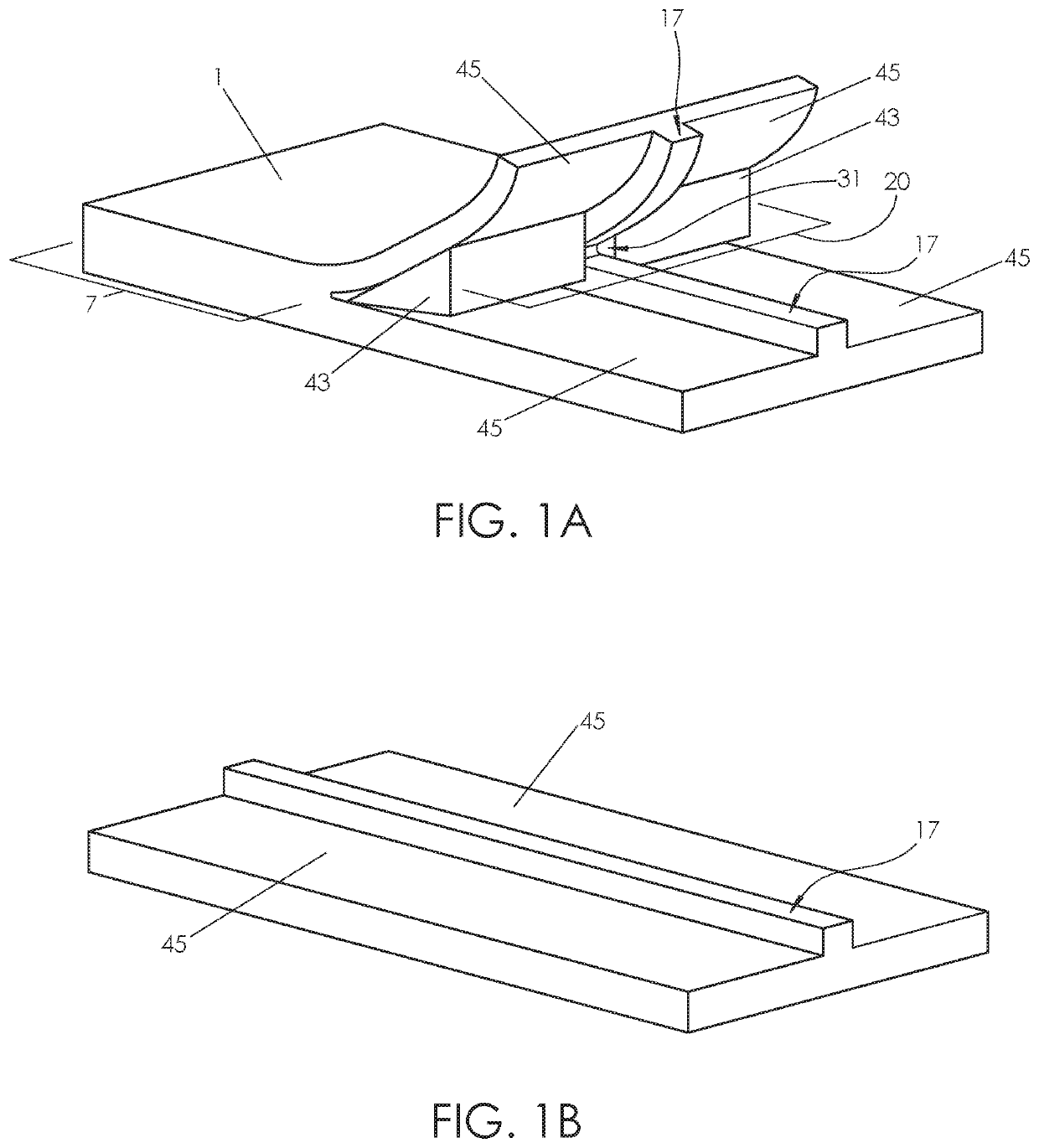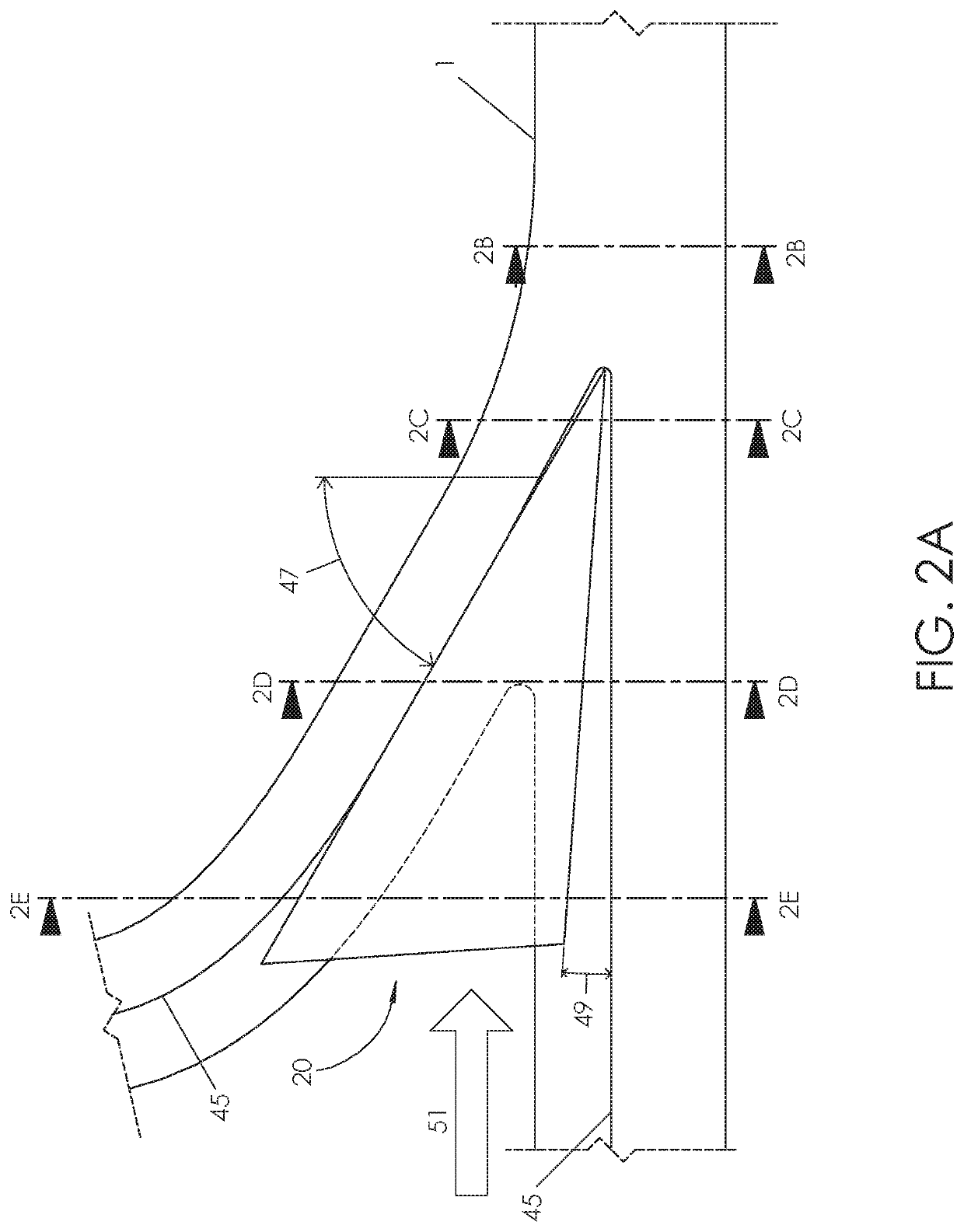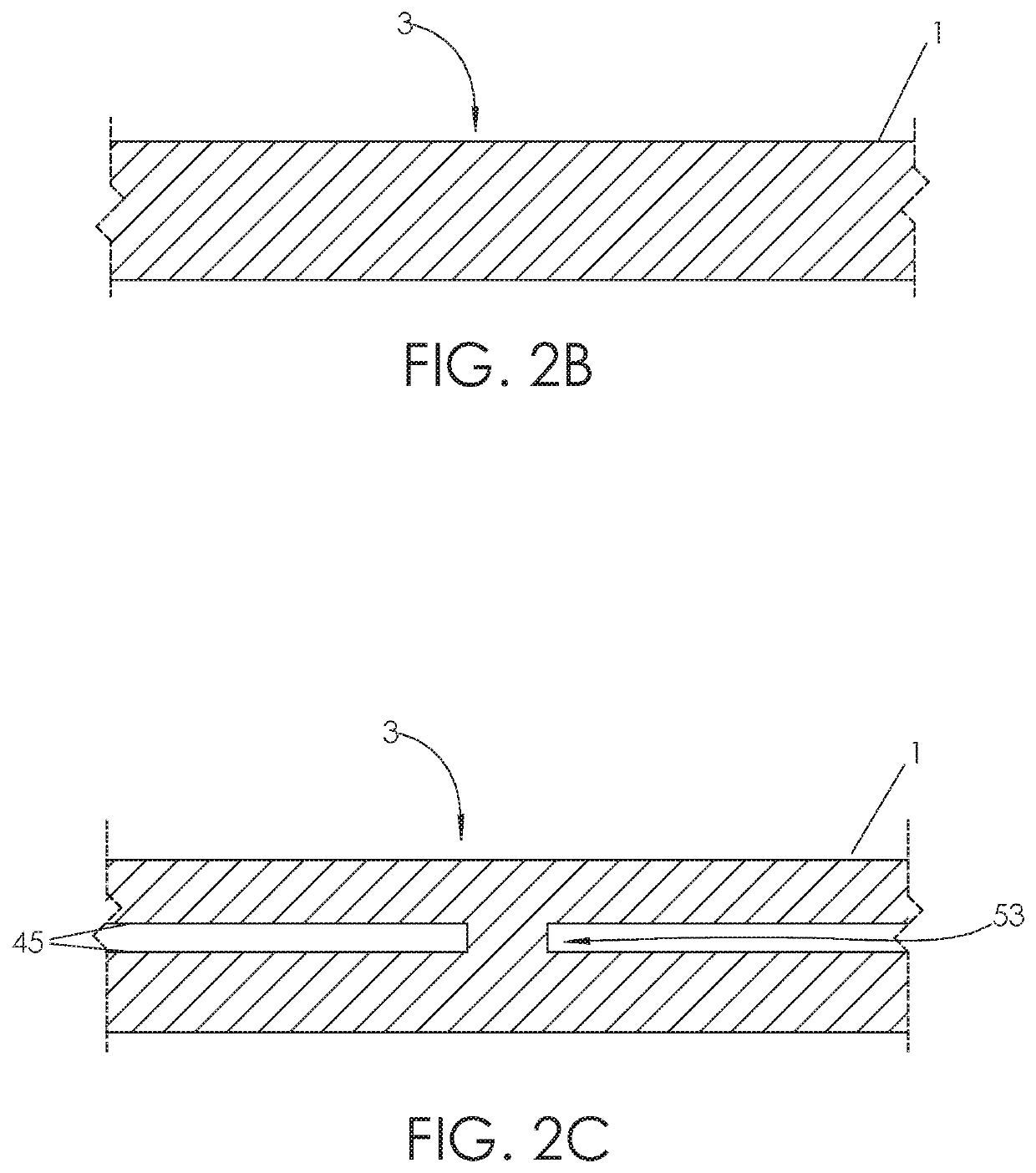Measurement of material properties under local tensile stress through contact mechanics
a contact mechanics and material technology, applied in the field of contact mechanics, can solve the problems of material with a large crack, and material with a large crack, and material size is too large to be feasibl
- Summary
- Abstract
- Description
- Claims
- Application Information
AI Technical Summary
Benefits of technology
Problems solved by technology
Method used
Image
Examples
Embodiment Construction
[0010]In one embodiment of the invention, an apparatus for performing a contact mechanics test in a substrate includes a stylus having at least two contact elements. Each contact element has a contact profile, and the contact elements are disposed in the stylus to define a stretch passage therebetween. The stylus is configured to deform the substrate so as to cause the substrate to flow between the contact elements and induce tension in the substrate within the stretch passage to generate and preserve micromodifications in the substrate.
[0011]In related embodiments, the stylus may be further configured to generate and preserve the micromodifications in multiple orientations, which may include (a) an opening that is either normal or transverse to an undeformed surface of the substrate as the stylus travels parallel to the undeformed surface, and / or (b) an opening that is normal or transverse to the direction of travel during an indentation mode. The apparatus may further include an e...
PUM
| Property | Measurement | Unit |
|---|---|---|
| attack angle | aaaaa | aaaaa |
| tension | aaaaa | aaaaa |
| movement | aaaaa | aaaaa |
Abstract
Description
Claims
Application Information
 Login to View More
Login to View More - R&D
- Intellectual Property
- Life Sciences
- Materials
- Tech Scout
- Unparalleled Data Quality
- Higher Quality Content
- 60% Fewer Hallucinations
Browse by: Latest US Patents, China's latest patents, Technical Efficacy Thesaurus, Application Domain, Technology Topic, Popular Technical Reports.
© 2025 PatSnap. All rights reserved.Legal|Privacy policy|Modern Slavery Act Transparency Statement|Sitemap|About US| Contact US: help@patsnap.com



